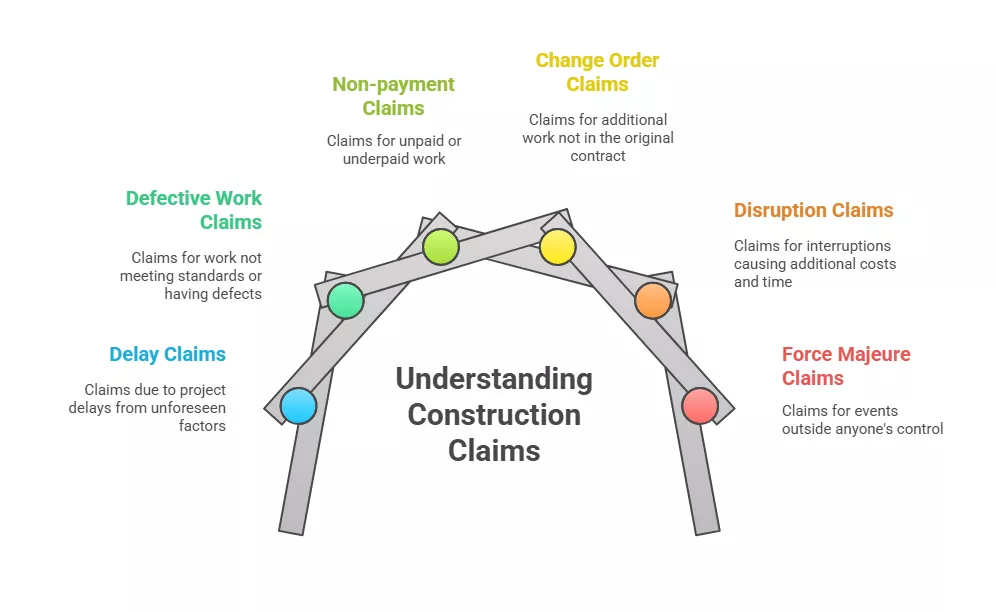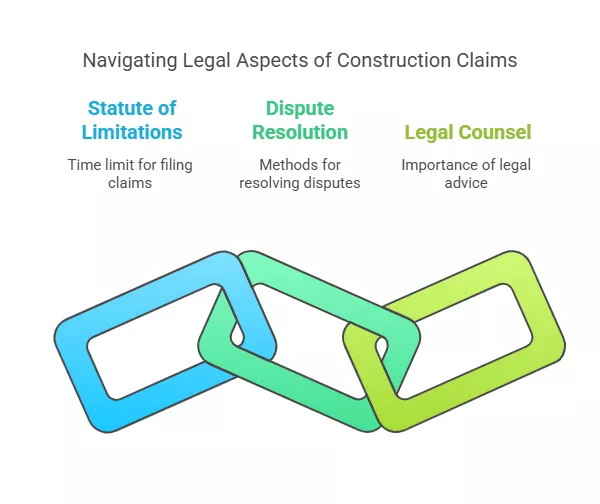Ranked #1 in Accurate and Reliable Estimation Services
A Fastest Turnaround 24 Hours!
Ranked #1 in Accurate and Reliable Estimation Services
A Fastest Turnaround 24 Hours!
Ranked #1 in Accurate and Reliable Estimation Services
A Fastest Turnaround 24 Hours!
Ranked #1 in Accurate and Reliable Estimation Services
A Fastest Turnaround 24 Hours!

Like other activities in life, construction projects have various parties, resources, and timelines. Even though construction projects are meticulously planned, issues may arise during the course of the work that makes construction claims unavoidable. Simply put, a construction claim is a formal request identifying the project’s compensation and dispute which may emanate as a result of delay, defect, or some unforeseen project modifications. Construction claims require adequate preparation in order to defend the interests of contractors, project owners, and subcontractors.
With this in mind, this guide advises on preparing construction claims offering valuable suggestions alongside relevant legal guidelines for every step of the process.
A construction claim is an initial step that is taken in a construction dispute and arises out of a construction contract. Claims arise because of delays, defects, and nonpayment. In general, a claim can be made when there is something wrong which could be in the form of time, expenditure, or scope in the construction activities.
Construction claims protect risk and undistributed losses that contrast to the allocated project risks during execution and that arise when construction operations are not conducted according to the contract.
Understanding the types of claims is the first step to preparing a proper claim. Here are some of the most common types of construction claims:

Although preparing a construction claim may feel overwhelming, having a straightforward process to follow eases the burden. Outlined below is a structured approach to assist you in preparing a winning construction claim.
The first and most crucial step in preparing a construction claim is to review the contract. The contract is your reference point for how to handle disputes and claims, and it typically contains provisions for:
By understanding the contract’s terms, you can identify the procedures for submitting a claim and ensure you comply with them.
Documentation is key to building a solid case. Ensure you gather and organize all relevant materials that support your claim. These could include:
Having thorough documentation will strengthen your case and increase the likelihood of a successful claim.
Before you prepare a claim, you need to fully understand the cause of the issue. If you’re filing a delay claim, ask questions such as:
Understanding the root cause of the problem helps to clarify whether the claim is valid and provides a clear basis for compensation or an extension.
Once you’ve identified the cause of the problem, you need to calculate the financial and time impact of the issue. For example:
Clear, accurate calculations will strengthen your claim and show exactly what you’re requesting.
Once you have all the details, it’s time to write your claim statement. A well-crafted claim statement is clear, factual, and concise. The claim statement should include:
The claim statement should be professional and free from unnecessary emotion.
After writing your claim, submit it according to the process outlined in the contract. Most contracts specify how and when claims should be submitted. Be sure to follow the correct procedure to avoid any delays or issues with your claim being accepted.
Although preparing a construction claim may feel overwhelming, having a straightforward process to follow eases the burden. Outlined below is a structured approach to assist you in preparing a winning construction claim.
Legal issues can complicate construction claims, so it’s important to be aware of any relevant laws and regulations in your state. Here are some key legal considerations:
A proper construction estimation can be crucial when preparing a claim. Estimating the costs accurately allows you to determine the exact financial impact of delays or defects, ensuring your claim is well-supported. Accurate estimates also help identify areas where cost overruns may have occurred and provide a basis for requesting compensation.

Drafting a construction claim appears to be a complex endeavor; however, employing a structured strategy can aid in overcoming the challenge. It is advised that one begins by revisiting the contract, collecting relevant documents, and analyzing the root of the problem as well as its ramifications. Provide a well defined claim statement and follow up diligently to ascertain a resolution. Understanding the myriad steps provided will aid in navigating through the construction claim process efficiently and effectively and attaining proper reimbursement and resolution in relation to conflicts that emerge within the project.
0 Comments